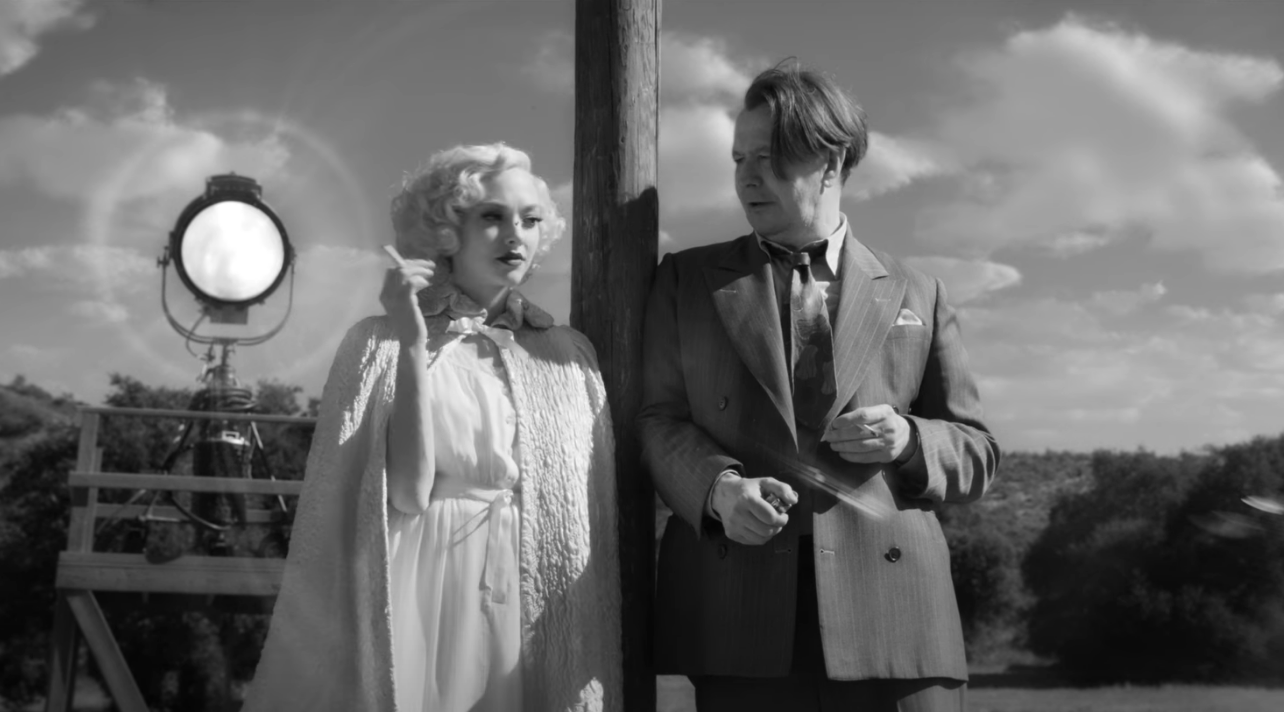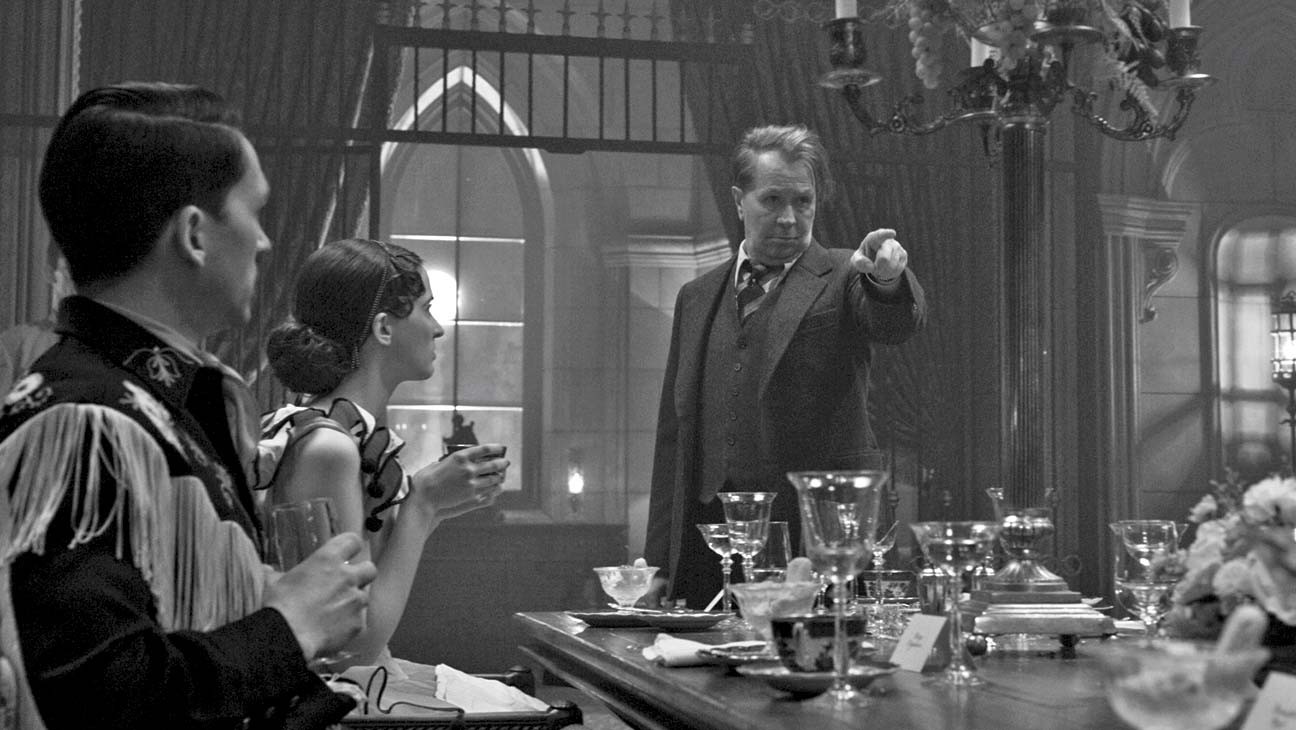There’s a movement among film aesthetes to make a movie look like it was made in the era depicted.

Back in 2012 Ben Affleck used the vintage 1970s Warner Bros ident for Argo, and Todd Phillips did the same thing for Joker. Some directors have enough clout or just think out of the box enough to go further, using film stock from the period (making modern technology look like it, actually) and referencing the filming styles that were popular in the day.
David Fincher first referenced the cue mark/cigarette burn that pops up between reels in Fight Club, and he makes them fairly prominent here in Mank too. Mank, he wants us to believe, was made as Herman Mankiewicz was actually holed up in a guest house in the desert outside LA writing Citizen Kane. Even the one sheet is styled like a movie from the 40s.
Played with commanding assurance by Gary Oldman, Mankiewicz is a sardonic drunk (there’s nobody connected to him around to sue anymore I suppose, and this is legitimate and accepted industry history) who knows very well he’s sold his soul to Hollywood after being a successful East Coast intellectual and hates himself for it, drowning his poisoned self image with alcohol, scathing putdowns and terrible treatment of everyone around him.
The wunderkind Orson Welles (Tom Burke) assigns Mank to write his debut Citizen Kane, installing him in the sweaty bedroom of the guest house where he dictates the script to a prim but smart English secretary, Rita (Lily Collins). He has Kane’s producer John Houseman (Sam Troughton) buzzing around, worried about how long the supposed genius is taking, as well as his own brother Joe (Tom Pelphrey), who now works as a studio executive thanks to Mank’s doing but is worried about the cost of satirising the life of a very powerful man in their social circle, William Randolph Hearst (Charles Dance).
We leave Mank and Rita in the shadowy bedroom for flashbacks that tell the story of how he came to Hollywood, landed such a plum gig in an industry that was riding so high, how the relationships formed (and were damaged or destroyed) and what bought everybody to where we meet them.

The characters form a knot thanks to Mank’s being friends with Heart’s blousy Brooklyner girlfriend Marion Davies (Amanda Seyfried), and the leadership at MGM who suffer continually at his barbs and contempt, Louis B Mayer (Arliss Howard) and Irving Thalberg (Ferdinand Kingsley). But rather than tightly connecting the dots of a plot in the script – written by his father in the 1990s – Fincher is instead more interested in just telling us how they all interacted through razor sharp production and artistic design.
The pace is unhurried and kind of sleepy as Mank and Marion wander around the opulent surrounds of San Simeon talking movies and politics, and particularly during an embarrassing dinner party scene Mank crashes, drunk, into Hearst’s dining hall to effectively tell everyone the plot of Citizen Kane and then vomit on the floor.
Fincher has selected actors who bear enough of a resemblance to the real people (apart from Oldman, ironically), and they’re all certainly talented, but you can imagine the meticulous director putting them through take after take until they got it how he wants it.
I’d gone off him a bit after a few uninspired book adaptations (Gone Girl, the completely redundant The Girl With the Dragon Tattoo), but this film is well worth it if you’re at all interested in Hollywood’s history.
With some freewheeling camerawork and the occasional big band flourish on the soundtrack it indeed has stylings from the filmmaking era depicted and it comes across as much more of a good time romp than we’ve ever seen from Fincher. Maybe that explains some of the criticism you’ve read about how much is fictional – an attempt to parallel Mank’s lot with that of Kane. Era-specific cameos like Eddie Cantor, Upton Sinclair and David O Selznick also pop up to raise more smiles.
But most importantly, being another of the pivotal stories about the industry that made and sustains them, and coming from one of the accepted titans of the field, it’s utterly critic proof. The only negative reviews I’ve read seem to be from critics wanting to buck the trend by pointing out the historical inaccuracies.
Subscribe to FIB’s Weekly Alchemy Report for your weekly dose of music, fashion and pop culture news!






